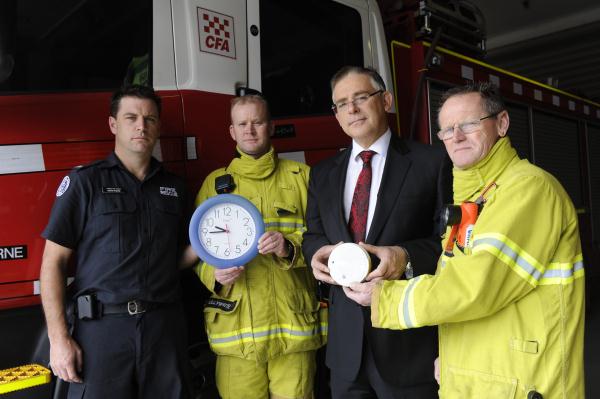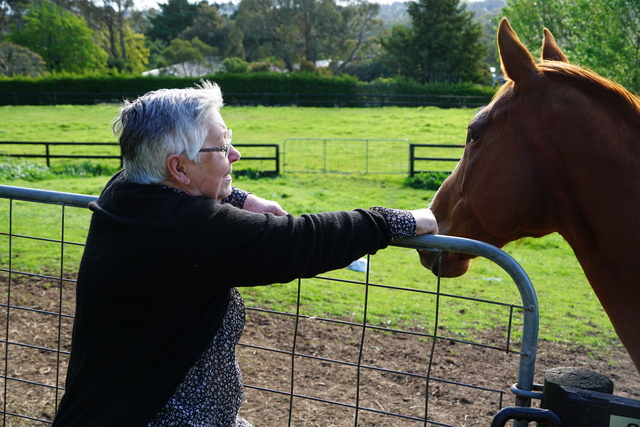By BRIDGET COOK
WITH daylight savings coming up this weekend, Casey residents are being encouraged to do one simple task that could save a life.
Holt MP Anthony Byrne visited Cranbourne CFA this week to urge local residents to change their smoke alarm batteries when they change their clocks for daylight saving.
Daylight saving starts on Sunday 6 October, with people reminded to wind their clocks forward one hour at 2am.
Mr Byrne encourages all families to periodically take a few minutes to test their smoke alarms and change the batteries at the same time as changing their clocks.
“It is also a good opportunity to help others in our community, particularly the elderly or disabled who are unable to reach their smoke alarms,” Mr Byrne said.
“The start of daylight saving marks the start of the summer months, traditionally a high-risk time for household and bushfires fires.
“While it is now law that every household must have a smoke alarm installed, many are not in working order because batteries have been removed or have gone flat, or a lack of maintenance has resulted in malfunction.”
Here are some tips to ensure you get the most out of your smoke alarm:
– Smoke alarms are intended to detect smoke before it reaches the bedrooms. Alarms should be located in the path of travel that people will most likely take to evacuate the building such as hallways and near the base of stairs leading to second storey bedrooms.
– In newly-built houses, mains powered smoke alarms have back-up batteries, which should be checked and replaced.
– Avoid locating alarms near cooking appliances and bathrooms. Alarms are extremely sensitive and will detect smoke and moisture including smoke from burning toast or steam from a shower.
– Avoid dead air spaces such as corner junctions of walls and ceilings, the apex of cathedral ceilings and between exposed joists/beams. Detectors should be placed a minimum of 100mm from walls.
– Keep in mind closed doors. If you close your bedroom door an alarm should be located in the bedroom as well as passageways.







